The Simple Discovery That A Piece Of Wire Mesh Can Stop A Flame In Its Tracks Saved The Lives Of Thousands



The simple discovery that a piece of wire mesh can stop a flame in its tracks saved the lives of thousands of miners.
This demonstration shows how a simple lamp made of gauze could contain the open candle flames that miners used before 1815. With the safety lamp, any potential explosions would stay contained and never escalate to dangerous levels (although mining remained an extremely dangerous occupation).
Watch the whole demo and hear the full story here.
More Posts from Curiositytherover and Others

XKCD has been tapped to teach high schoolers science
What if your most fearsome high school subjects like physics, chemistry and biology could be explained in humorous stick-figure drawings? That is exactly what textbook giant Houghton Mifflin Harcourt hopes to do by hiring 31-year-old artist and XKCD creator Randall Munroe to illustrate lessons. But wait, the collaboration gets even better for students.
Follow @the-future-now
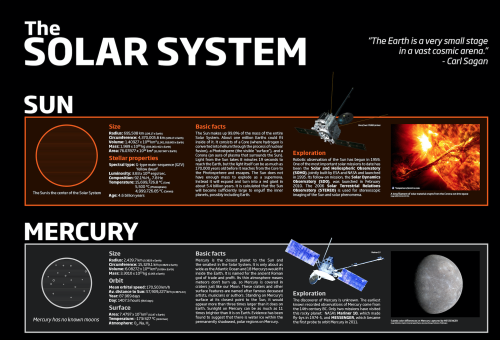
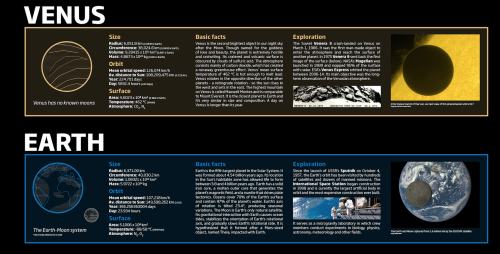
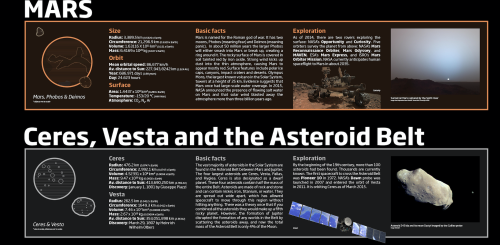
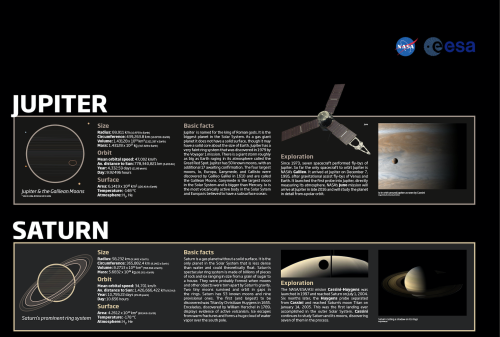
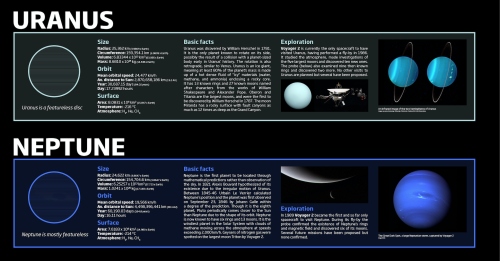

The Solar System
The Ins and Outs of NASA’s First Launch of SLS and Orion
NASA - Space Launch System (SLS) logo.
Nov. 27, 2015
NASA is hard at work building the Orion spacecraft, Space Launch System (SLS) rocket and the ground systems needed to send astronauts into deep space. The agency is developing the core capabilities needed to enable the journey to Mars.
Keep reading

The Proxima Centauri Exoplanet: ESO Press Conference Set for Tomorrow


Questioning the reliability of research
This year, one of the top five most talked-about research studies was on the reliability of research findings.
The Reproducibility Project is a vast, multi-institution effort aimed to measure how often researchers could replicate psychology experiments and yield the same result. For the project, 270 academics, including researchers at UC Riverside, UC San Francisco and UC Davis, attempted to replicate the findings from 100 recently published psychology experiments.
They failed twice as often as they succeeded; in fact, only 36 percent of the replicated studies yielded results consistent with earlier findings.
That doesn’t necessarily indicate the original research wasn’t accurate or reliable, researchers say. Many factors, including a lack of detail into methodology, can influence replicability. But the report — published in August in the journal Science — does highlight the challenge of producing reliable findings and suggests that more could be done to enable replicatable results.
Read the other research stories that got the world buzzing in 2015 →
Solar System: 2016 Preview
What do we have planned for 2016? A return to the king of planets. A survey of mysterious Ceres. More postcards from Pluto. Anyone who follows solar system exploration in 2016 is in for quite a ride. Last year was one for the record books – and now here are 10 things to look forward to in the new year. See also: what we have planned agency wide for 2016.
Juno Arrives at Jupiter

July 4, 2016 is arrival day for the Juno mission, the first sent expressly to study the largest planet in the solar system since our Galileo mission in the 1990s. Humans have been studying Jupiter for hundreds of years, yet many basic questions about the gas world remain: How did it form? What is its internal structure? Exactly how does it generate its vast magnetic field? What can it tell us about the formation of other planets inside and outside our solar system? Beginning in July, we’ll be a little closer to the answers.
OSIRIS-REx Takes Flight
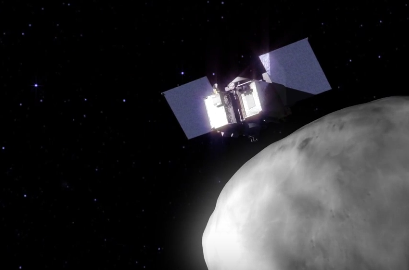
The OSIRIS-REx mission, short for Origins-Spectral Interpretation-Resource Identification-Security-Regolith Explorer, sets sail for an asteroid in September. The spacecraft will use a robotic arm to pluck samples from the asteroid Bennu to help better explain our solar system’s formation and even find clues to how life began.
Dawn Sees Ceres Up Close

After an odyssey of many years and millions of miles, in December the Dawn spacecraft entered its final, lowest mapping orbit around the dwarf planet Ceres. The intriguing world’s odd mountains, craters and salty deposits are ready for their close-ups. We can expect new images of the starkly beautiful surface for months.
Cassini Commences Its Grand Finale

In late 2016, the Cassini spacecraft will begin a daring set of orbits called the Grand Finale, which will be in some ways like a whole new mission. Beginning this year and extending into next, the spacecraft will repeatedly climb high above Saturn’s poles, flying just outside its narrow F ring 20 times. After a last targeted Titan flyby, the spacecraft will then dive between Saturn’s uppermost atmosphere and its innermost ring 22 times. As Cassini plunges past Saturn, the spacecraft will collect rich and valuable information far beyond the mission’s original plan.
New Horizons Sends More Postcards from Pluto

We have stared slack-jawed at the images and discoveries from last year’s Pluto flyby, but the fact is that most of the data that New Horizons collected remains on board the spacecraft. In 2016, we’ll see a steady release of new pictures — and very likely some expanded answers to longstanding questions.
Mars Missions March Forward
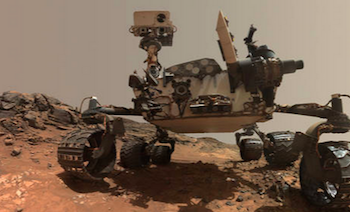
With five of our missions continuing their Martian quests, 2016 should be a good year for discoveries on the Red Planet.
Mars Odyssey
Mars Opportunity
Mars Reconnaissance Orbiter
Mars Curiosity
MAVEN
Mercury Transits the Sun

A transit is a very rare astronomical event in which a planet passes across the face of the sun. In May, Mercury will transit the sun, on of only thirteen Mercury transits each century on average.
LRO Keeps an Eagle Eye On the Moon

The Lunar Reconnaissance Orbiter (LRO) will extend its run in 2016, scanning the moon’s surface with its sharp-eyed instruments, investigating everything from lava tube skylights to changes at the Apollo landing sites.
Spacecraft Fly Under Many Flags

Our partner agencies around the world will be flying several new or continuing planetary missions to destinations across the solar system:
Akatsuki at Venus
ExoMars
Mars Express
Mars Orbiter Mission
Rosetta at Comet 67/P
Technology Demonstration Missions Push the Envelope
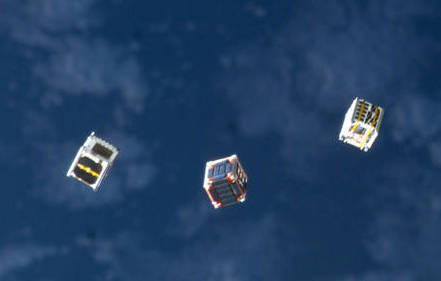
We’re always looking for new frontiers on distant worlds, as well as the technology that will take us there. This year, several missions are planned to take new ideas for a spin in space:
Deep Space Atomic Clock
NODES
LDSD
Make sure to follow us on Tumblr for your regular dose of space: http://nasa.tumblr.com

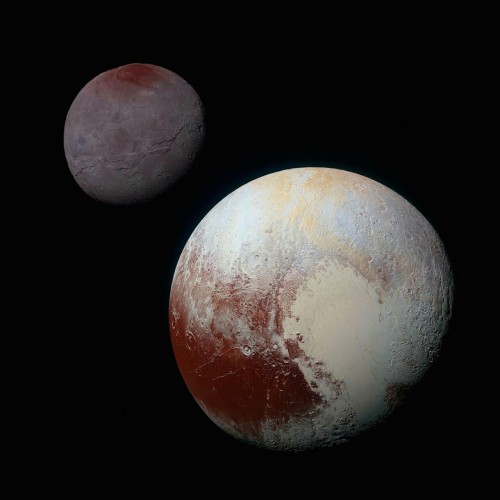
latest photos of Pluto and it’s moon.

Hi guys! I was inspired to make this post by all of the messages I’ve gotten from people asking me to either tag or stop posting images of spiders all together. And as someone who used to be absolutely mortified by any 8-legged creature, I can see where you are all coming from! I used to have a bedroom in the attic, a musky basement, an exotic plant and flower garden, and lots of wood piles. So it’s no wonder that I was confronted with spiders of all shapes and sizes. Ranging from the wolf spider, the brown recluse, cellar spiders, and all kinds of orbweavers. Spiders are incredibly important to our ecosystem, and without them we would suffer. They are incredibly complex and fascinating little creatures that, whether we like it or not, are going to cross our path. What helped me come over my fear the most was simply taking the time to learn about them.

1.) You swallow spiders in your sleep: FALSE. Might as well start with the one we’ve all heard! There would have to be so many unlikely circumstances for this to happen that it’s pretty implausible. Most spider species prefer to stay in their webs, while others hunt no where near humans. Beds don’t offer prey so they likely won’t crawl into them intentionally, unless you have other bugs in your bed for whatever reason. Spiders already could care less about us, they definitely won’t be crawling into a moist, slumbering and snoring human mouth. 2.) Two puncture marks means a spider bite: FALSE. Spiders do have two venom-injecting fangs that they usually use at the same time when biting. However, any spider smaller than a tarantula will leave bites so small that there will be no identifiable separation, if a mark is even left at all. When you have two bites right next to each other, it’s probably from a different bloodsucking insect that has bitten you twice. 3.) Daddy Long Legs have the most powerful venom, but its fangs are too small to bite you: FALSE. This is another wildly accepted urban legend with no fact behind it whatsoever. Depending on where you’re from, you may have a different idea of what a Daddy Long Leg is. To some it is a Harvestman while to others it is a Crane Fly; both have no venom! To others it is a Pholcid House Spider, which does have venom, however it is extremely weak. 4.) You’re always within 3 feet of a spider: FALSE. There’s actually some history behind this one! According to an article from the Burke Museum, it started in 1995 when a famous arachnologist stated, “Wherever you sit as you read these lines, a spider is probably no more than a few yards away.“ Throughout the years this line as been repeated with the distance becoming shorter and shorter. In reality, nobody can really say how far you are from a spider at any time. Just remember that spiders don’t really care about you are are likely to ignore you and go about their business. 5.) Spiders can lay their eggs under human skin through their bites: FALSE. First of all, spiders do not find the human body suitable for egg laying. However there are tons of stories claiming that someone’s “friend” had it occur to them (usually by a brown recluse, which prefer to stay far away from humans as their name suggests). Spiders simply don’t have the ability to somehow transfer their eggs into their venom. 6.) Any spider species can be found anywhere: FALSE. Just like animals and insects, spiders prefer certain climates to thrive. Therefore this myth is completely false. Besides house spiders, many species have very limited ranges. For more information on spiders in your area, a quick Google search will do you much better. 7.) Spiders found in your home are dangerous: FALSE. Spiders are not bloodsuckers. They have no reason to bite humans or your beloved Fluffy. Rod Crawford, the Curator of Arachnids at The Burke Museum, has been handling thousand of spiders for 44 years. He claims to have been bitten a total of 3 times. The spiders that are typically found in homes do not obtain venom powerful enough to do you any harm. 8.) Spiders come indoors in the fall: FALSE. Arachnophobes may not like this, but, the spiders in your house have likely been there the entire time. Outdoor spider species are not adapted to the indoors, and vice versa with house spider species. Very few spiders you see in your home have ever been outdoors. 9.) Tarantulas are dangerous or deadly to humans: FALSE. Hollywood tends to paint tarantulas as evil beasts who actively seek out humans to bite. In reality, tarantulas are common furry pets who are easily handled. Their venom has very low toxicity to humans. Most people who have been bitten don’t report anything besides a quick “ouch”. The most “dangerous” thing about tarantulas is the hair on their abdomens, which they can flick off and spread into the air. Although, this only causes mild skin rashes and irritation to the eyes and nasal passages.

1.) There are approximately 38,000 known species of spiders (as of February, 2015). Scientists believe there are still many more to be discovered. 2.) Spiders are vital to the ecosystem. Most of us know that they eat harmful insects, but they also pollinate plants and recycle dead animals and plants back into the Earth. They are also an essential food source to other small mammals, birds, and fish. 3.) Not all spiders spin webs. However, they all have the ability to produce silk. 4.) Web-weaving spiders have claws at the end of each leg. This enables them to move around their webs without getting stuck! 5.) Spiders have blue blood. 6.) Giant trapdoor spiders are considered living fossils. This is because they are very similar to the spiders that lived 300 million years ago! 7. The world’s biggest spider is the Goliath Spider. It can grow up to 11 inches wide with up to 1 inch long fangs! But don’t worry; it only eats frogs, mice, and other small creatures. 8.) Spiders have an exoskeleton. While us humans have bones that are surrounded by our muscles, spiders have their bones on the outside to protect their muscles on the inside. Which kinda make more sense to me. Grasshoppers, lobsters, and cockroaches are just a few that also have exoskeletons. 9.) Spider legs use hydraulic pressure to move. Their muscles are able to pull their legs inward, but not out again. This requires pumping a watery liquid into the legs to move them back out. This is why dead spiders’ legs are curled in. 10.) Spiders sometimes use a line of silk to “fly” through the air. This is called “ballooning”. You probably remember all but three of Charlotte’s babies did this. 11.) Baby spiders are called spiderlings. Pretty adorable. 12.) Males risk being eaten by the females. Similar to insects, female spiders are usually larger. They tend to eat any small creature that comes along, including the males who just wanna get some. The males attempt to avoid this by plucking strands of the female’s webs or doing a little dance (jumping spiders, who knew they could get more adorable).

Now, I know overcoming fears does not come easily to everyone. It took me quite a while! So I’ve put together some ideas that helped me. Just remember that this may not help everyone. If your fear is complicating every day life it may be best to seek help from a professional. 1.) Watch YouTube videos of spider handlers. This, this step right here, was the most important for me. It all started with this video. This owner cared so much about his spider who was having difficulties molting. He took the time to attempt to help her get it off, and showed a huge amount of grief and compassion as it went on. As someone who used to be scared of spiders, this video showed me a different side. This person loved this spider just like I love my cat. I began watching and subscribing to more and more channels, and found that it helped me a lot. Some channels worth looking at are tarantulaguy1796, TarantulaAddict, Jon3800, and Frankus Lee. 2.) Observe live spiders. If you see a spider in your house or outside, take a deep breath and just watch it for a little bit (at a distance, if you’d prefer). Watch its legs and how it moves, its different body parts and what it seems to be doing. Just watch them. They’re not going to jump on you and start gnawing on your arm like a human corn-on-the-cob, I promise. 3.) Visit spider exhibits. Whether it be at an aquarium, zoo, or museum, take the time to take a walk through the insect and arachnid exhibits. There will often be someone there who knows a lot about them who you can talk to. As mentioned before, the more you learn about them, the less scary they become! 4.) Watch someone handle a spider, or handle one on your own! Okay maybe the second one is a big step to take right now. But a lot of spider handlers may let you touch their legs (which are a lot furrier than you’d think!). However, if you’re too afraid, it’s best to watch from a distance for a while or pay close attention to how the handler holds the spider. The first time I held a spider I was pretty scared, but I was more concerned with dropping it or hurting it. I was amazed at how not-creepy it was and I walked away with an awesome experience. Just remember to keep them away from your face and to wash your hands before and after to keep those pesky hairs from irritating you. 5.) Overall, take it slow. If you need to start with pictures, start with pictures. Then gifs. Then videos. Then live spiders. It’s all up to you. In reality, spiders do not want to bother you. They are not these crazy blood-thirsty creatures that Hollywood and myths make them out to be. Educate yourself and remind yourself how amazing and important these little 8-legged guys are! EDIT: Silly me I totally forgot to include my sources! Fascinating Facts About Spiders Amazing Facts About Spiders Explorit Science Center Rod Crawford Burke Museum Scientific American






This is Tech Tats, tattoos that can track your health data and your personal information - watch the full video




Were you the type of kid that took apart telephones, pushed pennies into (old, CRT) TV sets or mixed as many under the sink cleaning agents together to call it a potion and see what would happen?
If you answered yes to any of the above, this is the gift guide for you!
-
 colorfulcollectorpirate liked this · 2 years ago
colorfulcollectorpirate liked this · 2 years ago -
 un-equalled reblogged this · 4 years ago
un-equalled reblogged this · 4 years ago -
 heytherelittlefoot reblogged this · 4 years ago
heytherelittlefoot reblogged this · 4 years ago -
 goodforyahealth reblogged this · 4 years ago
goodforyahealth reblogged this · 4 years ago -
 aquariusbitchh reblogged this · 4 years ago
aquariusbitchh reblogged this · 4 years ago -
 aquariusbitchh liked this · 4 years ago
aquariusbitchh liked this · 4 years ago -
 beautyinanunnaturalworld reblogged this · 4 years ago
beautyinanunnaturalworld reblogged this · 4 years ago -
 wheredespairdisappears reblogged this · 5 years ago
wheredespairdisappears reblogged this · 5 years ago -
 bubblewrench reblogged this · 6 years ago
bubblewrench reblogged this · 6 years ago -
 myparti reblogged this · 6 years ago
myparti reblogged this · 6 years ago -
 valentinaquevedo liked this · 7 years ago
valentinaquevedo liked this · 7 years ago -
 maxkat899 liked this · 7 years ago
maxkat899 liked this · 7 years ago -
 princessnijireiki liked this · 7 years ago
princessnijireiki liked this · 7 years ago -
 storiesofourlives reblogged this · 8 years ago
storiesofourlives reblogged this · 8 years ago -
 hella-strange reblogged this · 8 years ago
hella-strange reblogged this · 8 years ago -
 hella-strange liked this · 8 years ago
hella-strange liked this · 8 years ago -
 hellenahellsing reblogged this · 8 years ago
hellenahellsing reblogged this · 8 years ago -
 funscienceexperiments reblogged this · 8 years ago
funscienceexperiments reblogged this · 8 years ago -
 sillygoofer liked this · 8 years ago
sillygoofer liked this · 8 years ago -
 gulomean reblogged this · 8 years ago
gulomean reblogged this · 8 years ago -
 cu1lthe0ry liked this · 8 years ago
cu1lthe0ry liked this · 8 years ago -
 thered-panderz liked this · 8 years ago
thered-panderz liked this · 8 years ago -
 godmindlove reblogged this · 8 years ago
godmindlove reblogged this · 8 years ago -
 godmindlove liked this · 8 years ago
godmindlove liked this · 8 years ago -
 illest--villain liked this · 8 years ago
illest--villain liked this · 8 years ago -
 agapemsgd reblogged this · 8 years ago
agapemsgd reblogged this · 8 years ago -
 knowledgeistreasure reblogged this · 8 years ago
knowledgeistreasure reblogged this · 8 years ago -
 amazingbugcat reblogged this · 8 years ago
amazingbugcat reblogged this · 8 years ago -
 matt21-blog1 reblogged this · 8 years ago
matt21-blog1 reblogged this · 8 years ago -
 matt21-blog1 liked this · 8 years ago
matt21-blog1 liked this · 8 years ago -
 01d reblogged this · 8 years ago
01d reblogged this · 8 years ago -
 nirahsa reblogged this · 8 years ago
nirahsa reblogged this · 8 years ago -
 itsblosseybitch reblogged this · 8 years ago
itsblosseybitch reblogged this · 8 years ago -
 itsblosseybitch liked this · 8 years ago
itsblosseybitch liked this · 8 years ago -
 mistertotality reblogged this · 8 years ago
mistertotality reblogged this · 8 years ago -
 q-lvck reblogged this · 8 years ago
q-lvck reblogged this · 8 years ago -
 q-lvck liked this · 8 years ago
q-lvck liked this · 8 years ago -
 versus-vice reblogged this · 9 years ago
versus-vice reblogged this · 9 years ago -
 shadowedseas reblogged this · 9 years ago
shadowedseas reblogged this · 9 years ago -
 aussiediscobickiesblog liked this · 9 years ago
aussiediscobickiesblog liked this · 9 years ago -
 itsemeraldgaze liked this · 9 years ago
itsemeraldgaze liked this · 9 years ago -
 nofiretonight reblogged this · 9 years ago
nofiretonight reblogged this · 9 years ago -
 nofiretonight liked this · 9 years ago
nofiretonight liked this · 9 years ago